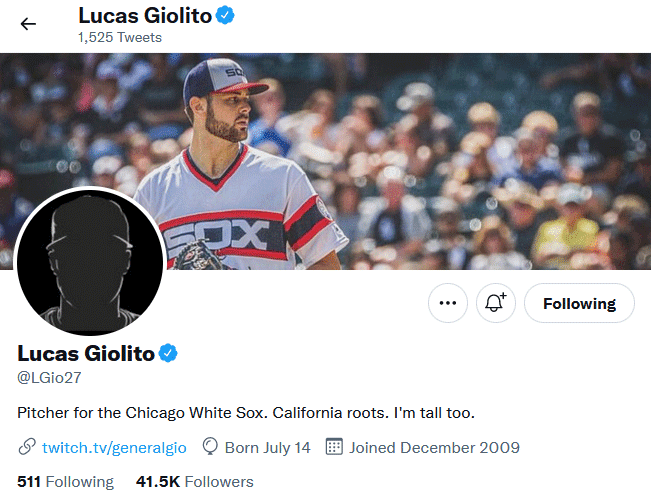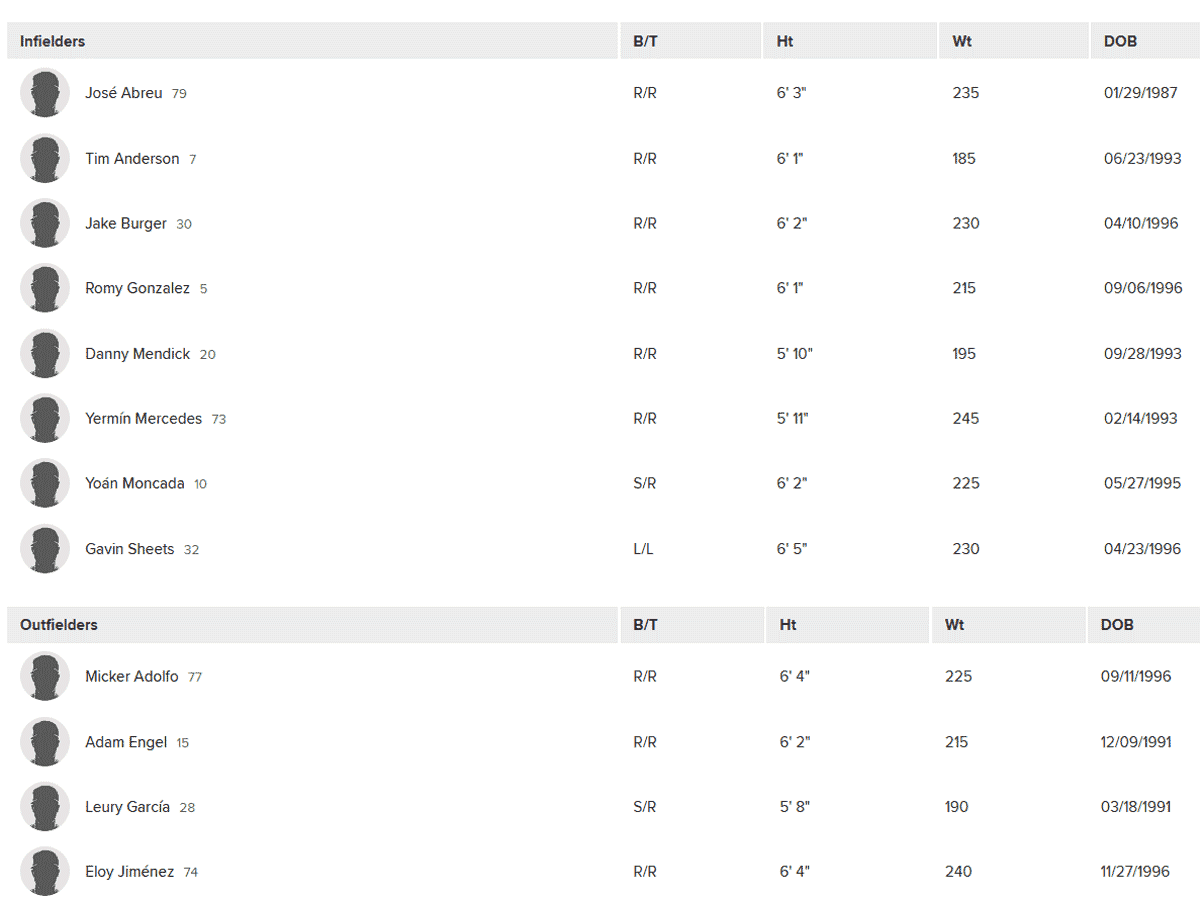Major League Baseball instituted the lockout exactly a week ago, on a day when my wife and I were coming home from the hospital with Mini Margalus in tow (thanks for the suggestion). The first few days of the month were a blur, but I remember seeing that MLB.com and all of its properties had erased any mention of current players from its home pages, and all of the faces from the roster, and being very confused as to why that was necessary.
It's still a thing. Go to whitesox.com, and all references to current players have been scraped. Minnie Miñoso's election to the Hall of Fame makes the White Sox's home page a little more timely than others, but not by much.

It seems counterproductive for MLB to highlight how little it has to offer without its labor during a lockout, so I figured there had to be some legal reason behind it. The Athletic looked into it, and the experts in the story sound equally baffled.
When commissioner Rob Manfred was asked last week in a news conference whether it was a legal issue, he offered two words: “It is.” But legal experts who spoke to The Athletic found it difficult to confidently identify MLB and Proskauer’s potential legal theory.
“I can’t think of anything,” said Dave Leach, a professor at Brooklyn Law School and a former regional director for the National Labor Relations Board. “I’ve never seen a case which had similar facts. And I was there for 45 years, so I saw a good number of cases at the board.”
Bruce Meyer, the lead negotiator for the players’ union, said MLB made the decision on its own, “and you’ll have to ask them for their reasons.”
The closest thing the labor sources present as an answer is that the headshots on player pages could be considered promotional in nature, and thus tied to a clause in the uniform player contract in the old CBA. But the scrubbing of all content, and the muzzling of reporters from mentioning any current players, looks like a kind of tactical move, if the NBA's precedent from 2011 is any indication. It also resembles behavior from your most passive-aggressive pseudo-friend on Facebook.
I doubt this has any major implications for the lockout, except for an early, easy way to galvanize players over social media. Lucas Giolito is one of many players who have swapped out their image for the generic silhouette on rosters.

Perhaps the funniest part is the way the league has effectively rendered its reporters into early January bloggers.
For MLB.com reporters, the new content limitations were explained last month in staff meetings. Multiple MLB.com employees said they were told they could only mention a player’s name in an article if absolutely necessary, and that player could not be the focus of the story. Any reference to a player must be approved by editors. Reporters were encouraged to write evergreen stories — about former players, non-40-man prospects, coaches, Hall of Fame candidates and history — instead of forward-looking angles about the upcoming season.
Scott Merkin is one of us!
* * * * * * * * *
Hall of Fame repercussions
It's always worth reading Jay Jaffe's reactions to Hall of Fame developments, and this year's election of six players includes one of the players he felt most deserved it (Miñoso), and one of the players he felt was far from the conversation in Jim Kaat.
By his own admission more of a second or third starter than an ace — as he said on MLB Network moments after the announcement — he made just three All-Star teams and received Cy Young votes in one season. He received a tepid reception from BBWAA voters, peaking at 29.6% in 1993, his fifth year of eligibility, and only occasionally topping 25% thereafter. For all of my familiar critiques of Hodges, whose numbers when adjusted for the bandbox of Brooklyn’s Ebbets Field simply don’t shine that brightly, it’s the election of Kaat that I have the hardest time grappling with, as he’s 112th among starters in JAWS, and 109th in my experimental, workload-adjusted version, S-JAWS.
Kaat might be the pitching equivalent of Harold Baines, in that he theoretically lowers the bar in terms of dominance, but the sheer consistency over a staggering length of time -- in Kaat's case, 625 starts and 4,530 innings -- makes him difficult to match even as a compiler. Kaat makes it easier to induct another fellow former White Sox in Tommy John, but who else?
When reading Joe Posnanski's essay on Buck O'Neil's long-overdue honor, he touched on another reason why Kaat and Oliva got their due.
Two, I believe the committee did something that is very difficult but, in my mind, essential: I believe they took into account that Tony Oliva and Jim Kaat are still alive. And I think it’s right that they did. This is a difficult topic, but we all hurt for those people who get elected after they are gone. When Josh said Minnie Miñoso’s name, the first thought was, “Yes! Finally!” But the second thought immediately rushed in: “He should have been alive for this moment.”
If Tony Oliva and Jim Kaat are Hall of Famers (and I do believe they are) then there’s no time to waste. Both men are 83 years old—they were born less than four months apart in 1938—and the next Golden Days ballot will not be for another five years. It is no fun thinking about such things; when it comes to the Hall of Fame, we prefer considering immortality to mortality. But I want to see Tony Oliva and Jim Kaat in Cooperstown giving their own speeches and soaking in all the love they’ve earned.






